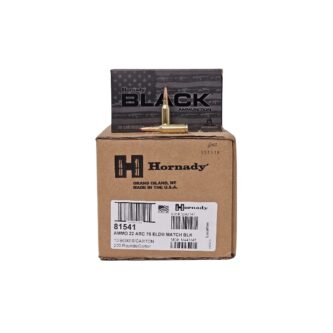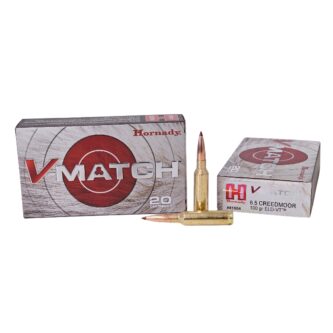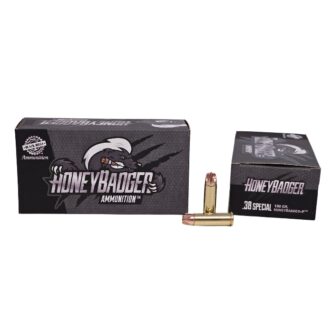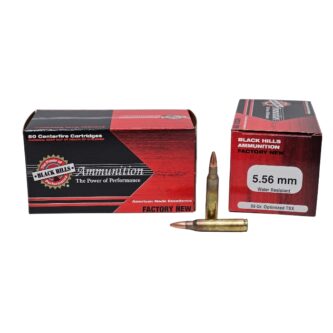When it comes to handling firearms, the safety and reliability of your ammunition are as crucial as your proficiency with the weapon itself. Every shooter, whether novice or experienced, must have a fundamental understanding of ammunition safety and the common malfunctions that can occur. These malfunctions not only pose potential risks to your safety but can also impact the performance and accuracy of your firearm.
Cartridge malfunctions can range from simple inconveniences to dangerous failures that might lead to injury or damage to your firearm. Understanding these issues not only helps in preventing them but also prepares you to handle them safely if they do occur. In this article, KIR Ammo explores various types of cartridge malfunctions such as misfires, hangfires, squib loads, and more. Each type will be detailed with its causes, implications, and the safety measures necessary to mitigate risks.
Get a Great deal on Ammo
Ammo safety is paramount and KIR Ammo is dedicated to equipping you with the knowledge to maintain safety standards. Understanding these malfunctions is not just about troubleshooting; it’s a fundamental aspect of responsible firearm ownership and operation.
Common Cartridge Malfunctions
Quick Links:
Misfire – Hangfire – Squib Load – Dud – Case Head Separation – Primer Failure – Double Feed – Stovepipe – Overpressure / High Pressure – Corrosion / Pitting Doublefeed – Bullet Setback – Rim Damage
The Impact of Malfunctions on Performance – Frequently Asked Questions (FAQ)
1. Misfire
Definition and Causes: A misfire occurs when the primer of a cartridge is struck by the firing pin, but the gunpowder fails to ignite, resulting in no bullet discharge. This malfunction can be caused by a variety of factors, including defective or deteriorated primers, improper seating of the primer, contamination of the primer or gunpowder (often by oil or moisture), or substandard ammunition quality.
Safely Handling a Misfire: Handling a misfire safely is critical to prevent accidental discharge, which could occur if the primer is slow to ignite (similar to a hangfire). Here are the steps to follow if you experience a misfire:
- Keep the Firearm Pointed in a Safe Direction: Even if it didn’t fire as expected, treat the firearm as if it could discharge at any moment. Keep it pointed downrange or towards a safe backstop.
- Wait Patiently: Maintain your position and keep the gun aimed safely for at least 30 seconds. Some primers may ignite slowly, and waiting ensures that if a delayed ignition occurs, it happens safely.
- Eject the Cartridge Safely: After waiting, carefully and slowly open the action of the firearm to remove the misfired round. Ensure you maintain control of the firearm and keep it pointed in a safe direction.
- Inspect the Firearm: Before loading another round, inspect the firearm to ensure that no damage has occurred and that the barrel is clear. A misfire followed by a live round can cause a dangerous obstruction.
- Dispose of the Misfire Appropriately: Treat the misfired cartridge as potentially dangerous. Consult your local shooting range or firearm dealer about proper disposal. Do not attempt to reuse or disassemble the misfired cartridge yourself.
- Check Other Ammunition: If a misfire happens, it’s wise to check other ammunition from the same batch or box, especially if you suspect it might be a quality issue with the ammo.
By understanding and following these steps, shooters can ensure their safety and the safety of others around them when dealing with the relatively common but potentially dangerous situation of a misfire. Always prioritize caution and follow established safety protocols to handle any ammunition malfunctions effectively.
2. Hangfire
Definition and Dangers: A hangfire is a delay between the trigger pull and the gun firing. This dangerous malfunction occurs when there is a noticeable lag between the firing pin striking the primer and the actual discharge of the bullet. Hangfires can be caused by faulty ammunition, degraded primers, or contamination of the powder. The primary danger of a hangfire is the assumption that the round is a dud, which may lead a shooter to unsafely handle the firearm while the round is still live, potentially leading to accidental discharge.
Safety Precautions for Handling a Hangfire: Handling a hangfire correctly is essential to prevent injuries or damage. Here are crucial steps to follow if you suspect a hangfire has occurred:
- Keep the Firearm Pointed Downrange: As with any firearm malfunction, keep the gun pointed in a safe direction, preferably downrange, for at least 30 seconds to a minute. This ensures that if the round fires late, it does so in a controlled and safe environment.
- Do Not Open the Firearm: Resist the urge to immediately open the action or inspect the firearm. This can provoke the round to discharge unexpectedly while you are in close proximity to the breech.
- Wait Patiently: Maintain your position and control over the firearm for a significant amount of time. While 30 seconds is the minimum recommended wait time, extending this to a minute or more can provide additional safety.
- Carefully Eject the Round: After the waiting period, if the firearm has not discharged, carefully and slowly open the action to remove the cartridge. Continue to point the firearm in a safe direction during this process.
- Inspect the Firearm and Ammunition: Examine the firearm to ensure there are no obstructions or damage. Also, inspect the round itself. Look for any signs of defective primer or other issues that might have caused the hangfire.
- Dispose of the Round Properly: Similar to a misfire, treat the hangfire round as potentially dangerous. Do not attempt to reuse it. Dispose of it following guidelines provided by your local range or firearms dealer.
- Remain Vigilant with Remaining Ammunition: If a hangfire occurs, consider the condition of the remaining ammunition from the same batch. If you suspect a systemic issue with the ammo, avoid using the rest and return it to the manufacturer or point of purchase.
By adhering to these safety precautions, shooters can effectively manage the risks associated with a hangfire. Always prioritize safety and exercise patience to handle this type of ammunition malfunction appropriately.
3. Squib Load
Explanation and Dangers: A squib load is a firearm malfunction where the bullet does not have enough force behind it to exit the barrel and gets stuck somewhere along its length. This is typically caused by a cartridge that lacks sufficient propellant (gunpowder) or, in some cases, has no propellant at all. The primer alone can push the bullet into the barrel but not through it. Squib loads are extremely dangerous because they can go unnoticed, especially by inexperienced shooters. If another round is fired with the bullet still lodged in the barrel, it can cause catastrophic barrel failure, potentially injuring the shooter and bystanders.
Recognizing and Responding to a Squib Load: Recognizing a squib load quickly and responding appropriately is crucial to prevent further damage or injury.
- Recognition Signs:
- Unusual Sound: A squib load often makes a noticeably different sound upon firing, much quieter than a normal discharge.
- Reduced Recoil: The firearm will typically have less recoil than usual because the bullet is not propelled with normal force.
- Failure to Eject: In semi-automatic firearms, a squib load may not generate enough force to cycle the action, resulting in a failure to eject the spent casing.
- Immediate Actions:
- Cease Firing: If you suspect a squib load, stop firing immediately. Do not attempt to fire another round.
- Keep Firearm Pointed Safely: Maintain control and keep the firearm pointed in a safe direction.
- Check the Barrel: Safely open the action and remove any ammunition. Visually inspect the barrel for any obstructions. It may be necessary to use a cleaning rod or bore light to confirm whether a bullet is lodged inside.
- Do Not Attempt to Fire: If a bullet is stuck, do not try to shoot it out with another round, as this is likely to cause the barrel to burst.
- Clearing the Barrel:
- Use Proper Tools: Use a cleaning rod to gently push the stuck bullet out from the barrel. Push from the breech end to the muzzle if possible to avoid damaging the rifling and the crown of the barrel.
- Professional Help: If you are unable to clear the barrel safely or if you’re unsure about your ability to do so, take the firearm to a professional gunsmith.
- Prevention Tips:
- Quality Ammunition: Use high-quality, factory-loaded ammunition to minimize the risk of squib loads.
- Regular Maintenance: Regular cleaning and inspection of your firearm can help you detect potential issues before they lead to malfunctions.
- Listening and Feeling: Always be attentive to the sound and feel of each shot. Recognizing when something is off can prevent further issues.
Understanding the signs of a squib load and knowing how to respond appropriately can save both your firearm and, more importantly, prevent serious injury. Always approach any signs of trouble with caution and prioritize safety in every shooting session.
4. Dud
Understanding a Dud and Its Characteristics: A dud, in the context of ammunition, refers to a round that fails to fire despite the primer being struck by the firing pin. This failure is typically due to a defective primer or manufacturing flaws within the cartridge itself. Unlike a misfire, where the primer might be struck but does not ignite immediately, a dud’s primer is completely non-functional. The main characteristics of a dud include a firing pin mark on the cartridge with no subsequent ignition, no discharge sound, and no recoil.
Differences Between a Dud and a Misfire: Understanding the distinction between a dud and a misfire is crucial for handling each situation correctly:
- Cause of Failure:
- Dud: The failure is usually due to a defective primer that cannot ignite the gunpowder inside the cartridge. This could be from a manufacturing defect, such as a lack of primer compound or a degraded primer.
- Misfire: A misfire typically involves a delay in the primer’s ignition. The primer may eventually ignite if given enough time, or it might fail to ignite due to factors like contamination or dampness.
- Immediate Response:
- Dud: With a dud, since the primer is non-functional, the likelihood of delayed ignition is minimal. However, safety protocols still require that the shooter treat it cautiously.
- Misfire: In case of a misfire, the recommended practice is to keep the firearm pointed in a safe direction for at least 30 seconds because there is still a risk of delayed ignition.
- Handling Procedures:
- Dud: Once identified and after waiting to ensure it is not a slow-burning misfire, the dud should be carefully ejected and handled as defective ammunition. It should be disposed of safely or returned to the manufacturer if collecting for a batch issue report.
- Misfire: A misfire requires careful handling to ensure that if it does ignite, it does so safely within the firearm pointed in a safe direction. After waiting, the misfire can be ejected and either attempted to fire again or disposed of properly.
In summary, while both duds and misfires result in the ammunition not discharging as expected, the primary difference lies in the functionality of the primer and the appropriate safety responses. In both scenarios, the utmost caution should be used to handle the situation safely, ensuring the firearm remains directed in a safe area and following proper procedures to clear and inspect the firearm before continuing use.
Buy Ammo at KIR
5. Case Head Separation
Causes and Consequences of Case Head Separation: Case head separation is a type of ammunition failure that occurs when the head of the cartridge separates from its body during firing. This malfunction typically happens at the base of the cartridge and can be caused by several factors:
- Excessive Chamber Pressure: Overloading the cartridge with too much propellant or using improperly sized or seated bullets can create pressures higher than what the cartridge is designed to withstand, leading to separation.
- Repeated Reloading: Brass becomes work-hardened and less elastic with each firing and resizing cycle. Over time, this fatigue can lead to cracks and eventually case head separation.
- Improper Headspacing: Excessive headspace in the firearm’s chamber allows the cartridge to move back and forth upon firing, stressing the brass near the head and increasing the risk of separation.
- Worn or Corroded Brass: Using old or corroded brass that has weakened over time can also lead to case head separation, as the material is no longer able to withstand the pressures of firing.
The consequences of case head separation can be serious, including jamming the firearm, damaging the chamber, or even causing injury to the shooter. The remaining part of the cartridge case stuck in the chamber can be particularly troublesome to remove and may require gunsmith services.
Tips to Prevent Case Head Separation: Preventing case head separation is crucial for safe shooting practices and to ensure the longevity of your firearm. Here are some tips to help avoid this dangerous malfunction:
- Inspect Brass Regularly: Before reloading, always inspect your brass for signs of wear, especially near the head. Look for stretch marks, discolorations, or small cracks, which are indicators that the brass should be retired.
- Limit Reloading Cycles: Understand the life expectancy of your brass and keep track of how many times you’ve reloaded each case. Depending on the caliber and the firing conditions, brass should only be reloaded a certain number of times.
- Control the Headspace: Ensure your firearm’s headspace is correctly set according to the specifications for your particular caliber. This can often require professional adjustment or inspection by a qualified gunsmith.
- Use Quality Brass and Equipment: Invest in high-quality brass and reloading equipment. Good quality brass can better withstand the pressures of repeated firings and resizing.
- Avoid Excessive Reloading Practices: Follow reloading manuals and guidelines meticulously to avoid overloading or improperly seating bullets which can lead to excessive pressures.
By adhering to these preventative tips and maintaining a routine inspection of your ammunition and firearm, shooters can significantly reduce the risk of case head separation and ensure a safer shooting experience.






























